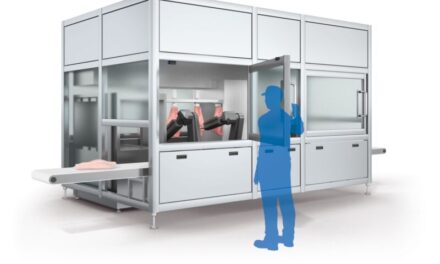Due to the COVID-19 pandemic, the 2020 Tokyo Olympic Games are scheduled to take place with no spectators cheering. Though we can’t watch those exciting competitions in the stadiums, the cutting-edge technologies used in the venues, such as robotics, autonomous vehicles (AV), facial recognition systems and more, will still make their impacts on the global stage. Here Neil Ballinger, head of EMEA at automation parts supplier EU Automation, discusses what manufacturers can learn from these technologies.
Did you know the first Japanese robot appeared in 1928? As the world’s leading manufacturer of robots, Japan has a long history of embracing robotics technology. There is no doubt that this year’s Tokyo Olympic Games will be a great opportunity for Japan to showcase its expertise in robotics and artificial intelligence (AI) technologies.
Tokyo 2020 has unveiled four new robots, including the Tokyo 2020 mascot-type robots, the T-HR3 humanoid robot, the T-TR1 robot and the Field Support Robot (FSR). They will be used to assist athletes and officials at competition venues and to relay sound, images, and physical feedback from venues to people watching remotely.
But what does this have to do with manufacturing? You might think that sports and Industry 4.0 have nothing in common, but there are actually needs that are common to both worlds, such as the necessity to prevent unauthorised access to sensitive and hazardous areas. So, what can we learn from the Tokyo Olympics?
Facial recognition system
It’s the first time that facial recognition technology has been adopted in the Olympics. To increase security and ensure smooth verification for over 300,000 athletes, sponsors, journalists and volunteers, Intel is cooperating with NEC to offer a large-scale facial recognition system around venues and facilities. The system has been proved twice as fast as regular ID checks, which can not only shorten waiting time, but also improve security by preventing spoofing and unauthorised access.
In manufacturing, facial recognition systems can be used to enhance safety and security on the factory floor, especially for access control. For example, these systems can identify potential intruders who try to break into the facility and prevent tailgating, where an unauthorised person follows an employee through an open door.
Whereas traditional ID checks, key cards and access codes are vulnerable to theft, facial recognition systems are more difficult to bypass. They can also ensure that only employees with proper training have the access to sensitive or high-risk equipment. If any unauthorised personnel enter the controlled areas, the system will immediately notify plant managers. Furthermore, it can keep track of critical workers’ location, ensuring their safety in case of emergency.
Autonomous vehicles
The Japanese automotive manufacturer Toyota supplies over 20 specially designed e-Palette vehicles to facilitate mobility for people in the Olympics villages. The vehicles are supported by an on-board safety operation and controlled by an automated driving system, which can operate over 20 kilometres per hour at the Society of Automotive Engineers (SAE) level*2. AVs that reach the SAE level*2 are equipped with advanced driver assistance systems (ADAS), which is used to avoid vehicle accidents caused by human error.
The manufacturing sector can also benefit from AVs. For example, AVs can transport materials for industrial facilities and warehouses safely and efficiently. The Canada-based supplier for self-driving technology OTTO Motors designs three types of AVs for material transport, which can autonomously move payloads of weights up to 1900kg. With these AVs, facilities can operate with less human labour and workers can be reallocated to more valuable tasks. In addition, AVs’ high operational speed means that they can get more work done compared to human workers, which positively impacts the ROI.
Countries will come together in the Olympics to compete in a range of sports, but national economies are also competing in a technological race. In the manufacturing world, companies can take advantage of a wide range of technologies to improve efficiency, mobility, and security.
[Image: Bryan Turner for Unsplash]




